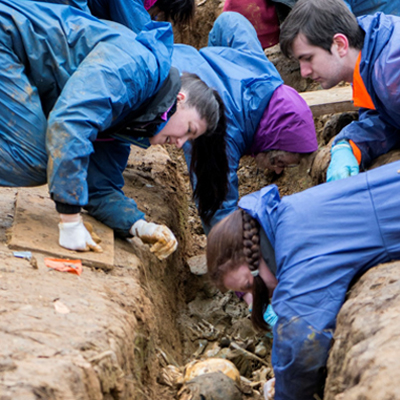The SEA6000VX X-ray fluorescence (XRF) analyser is used for wide range of materials-based projects, from bullets and materials for solar cells to fine porcelain. It is used for education, research, consultancy projects within the Cranfield Forensic Institute.
How the XRF works
The XRF has an X-ray tube mounted above a moveable table that holds the specimen. This allows the operator to select an area to be examined. During analysis the X-ray tube fires a beam of X-rays onto the specimen causing it to emit X-rays of a different energy that are recorded by a detector that is mounted above it. These X-rays are characteristic of the elements present in the specimen. The composition of the specimen can be mapped over a 2D area by moving the platform during the analysis.
Instrument specifications
The SEA6000VX XRF can analyse solid specimens with a wide range of shapes and sizes, and powders and liquids, with care. Analysis is done at atmospheric pressure and is suitable for delicate specimens that might be damaged if put under vacuum. Its analysis chamber is 58cm wide, 45cm deep and 15cm high. The specimen is positioned on an XY table that allows mapping over a 25 by 20cm area. It can detect elements from magnesium (atomic number 12) to uranium (92), or sodium (11) to uranium (92) if a helium purge is used. It has a square analysis area (beam size) that can be selected to be 0.2, 0.5, 1.2 or 3mm wide. The specimen is irradiated from above using an X-ray tube (tungsten target and switchable filters) operating at 15, 30, 40 or 50 kV and a current from 20 to 1000 µA. Sample observation is by a high resolution CCD camera system that can map the whole area of the table. Qualitative analysis is by spectrum comparison; quantitative analysis is available using fundamental parameters and calibration curves for both bulk and layers samples. Typical data collection times are around 30 seconds for a single point analysis to minutes or even hours for mapping over large areas.

Summary of applications
Our equipment allows analysis of the composition of a wide range of types of specimen. This ranges from qualitative analysis where spectra are compared to semi quantitative and fully quantitative analysis using fundamental parameters and calibration curves. Specimens can be mapped over areas up to 20 by 25cm – time and geometry permitting.
Using the facility
Current and recent research projects:
- Impurities in explosives;
- Trace element analysis of charcoal and other cooking fuels.
PhD projects:
- Analysis of fine porcelain;
- Compound semiconductors for thin film solar cells.
Recent MSc projects:
- Analysis of calcium to phosphorus ratio in animal bones;
- Forensic analysis of shot gun pellets;
- Establishing the provenance of small arms rounds;
- Analysis of soils from archaeological sites.
Examples of consultancy uses:
- Purity and contamination analysis;
- Industrial process evaluation;
- Measurement of alloy composition;
- Analysis of minerals;
- Analysis of porcelain, ceramics and archaeological metalwork.
